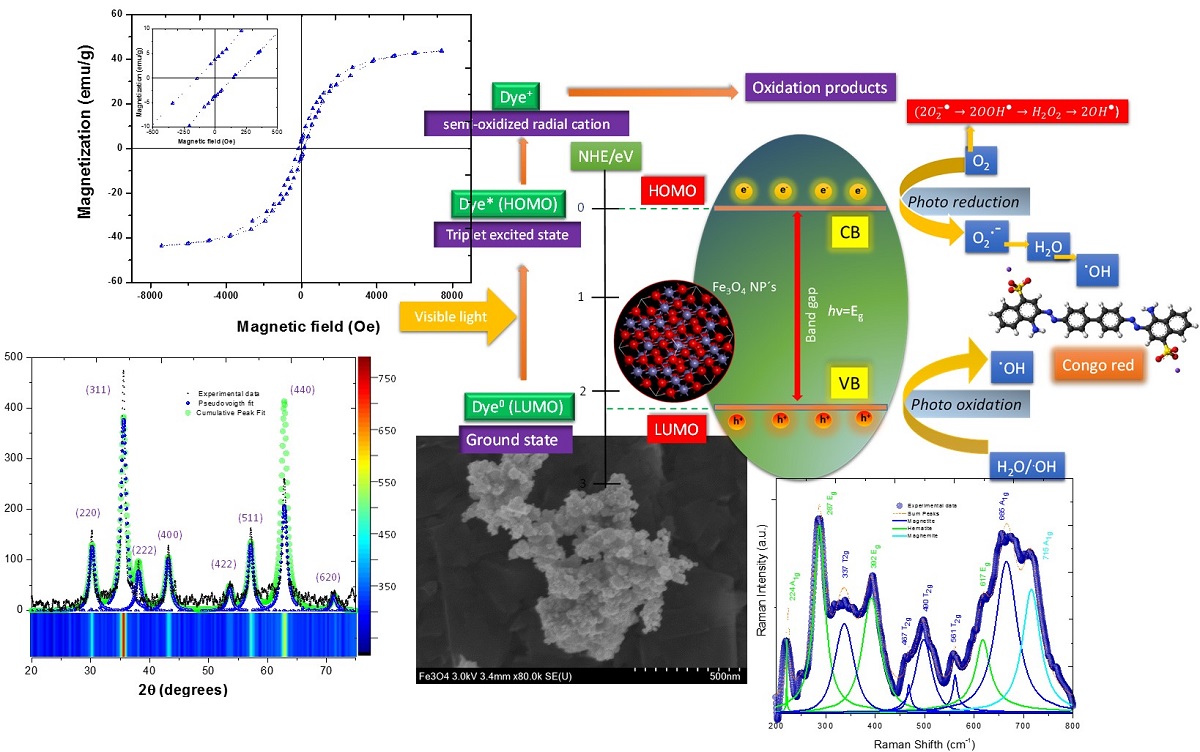Currently, the use of sustainable chemistry as an ecological alternative for the generation of products or processes, free of polluting substance has assumed a preponderant role. The aim of this work is propose a bioinspired, facile, at low cost, non-toxic and environmentally friendly alternative to obtaining magnetic nanoparticles whit a majority phase of magnetite (Fe3O4). Is important to empathize that the synthesis was based on the chemical reduction through the Cnicus Benedictus extract, whose use as reducing agent has not been reported in the synthesis of iron oxides nanoparticles. In addition, the Cnicus Benedictus is abundant endemic plant in Mexico, with several medicinal properties and a large number of natural antioxidants. The obtained nanoparticles exhibited significant magnetic and antibacterial properties and an enhanced photocatalytic activity. The crystallite size of the Fe3O4 nanoparticles (Fe3O4 NP’s) was calculated by Williamson-Hall method. The photocatalytic properties of the Fe3O4 NP´s were studied by kinetics absorptions models in the Congo red (CR) degradation. Finally the antibacterial effect of the Fe3O4 NP´s were evaluated mediated the Kirby-Bauer method against E. coli and S. aureus bacteria. This route offers a green alternative to obtain Fe3O4 NP´s with remarkable magnetic, photocatalytic and antibacterial properties.

